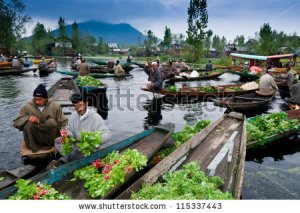 Two years ago, in June 2013, Kedarnath, a pilgrimage centre cradled in the Himalayan mountains, witnessed the worst ever natural disaster to hit the state of Uttarakhand. Flash floods wiped out many villages and more than 5500 people were washed away in the gushing waters. Among these were around 60 men of village Deoli-Benigram in Rudraprayag district. Many were the sole breadwinners of their families, and left behind wives and children. Today, Deoli-Benigram is known as thevillage of widows.
Two years ago, in June 2013, Kedarnath, a pilgrimage centre cradled in the Himalayan mountains, witnessed the worst ever natural disaster to hit the state of Uttarakhand. Flash floods wiped out many villages and more than 5500 people were washed away in the gushing waters. Among these were around 60 men of village Deoli-Benigram in Rudraprayag district. Many were the sole breadwinners of their families, and left behind wives and children. Today, Deoli-Benigram is known as thevillage of widows.
This year on June 16, on the second anniversary of the disaster, all the widows and children gathered in a nearby school building to mourn the departed, while newspaper and TV reporters milled about to capture the pathos of the scene. At a distance, I saw a female reporter tapping the back of a widow who was wailing while narrating her ordeal. I too scanned the faces of these widows to find an emotional face and I ended up getting a lady in her 50s. Her face was wrinkled and she wore thick glasses but I could still see her sunken eyes.
I asked her to sit on a chair, but I could not hear what she was saying since the courtyard was too packed with people. We decided to talk in quieter environs and moved to the rear side of the building. Leaning against the wall, she stared out at a mountain behind me. Tears started rolling down her eyes. It was hard for me to see her crying — I would have escaped the scene but I felt awkward.
After some time, she held back her tears and asked me why I was there. I was perplexed but I ignored the question and began asking her about her life. I came to know that Leela Devi’s husband, the family’s sole earner, was working as a shopkeeper in Kedarnath. After he died, Leela Devi’s elder son is shouldering financial responsibilities by opening a shop in his own village.
Leela Devi hopes to educate her younger son, and she hopes he has a better life in store for him. But she is running out of money. In our 20 minutes of conversation, the only concern she voiced was college fees for her younger son. Her elder son can hardly make ends meet. The mandatory government compensation that she got at the time of her husband’s death barely covered expenses for five or six months.
When I left Leela Devi, she was glaring at me. She might have thought I would help her. Perhaps she felt betrayed that I, like all others, was just looking for an emotional tale.
Leela Devi’s story is the story of more than 35 widows in the village who are struggling for survival after losing their husbands.
Danita lost her husband at the age of 24. She is now taking care of two small children and an old mother-in-law. She works at an NGO’s sewing and stitching centre. Unlike Leela, she does not dream of educating her children and says that poverty will force the children to start earning as soon as possible.
Even two years after the disaster, the wounds seem fresh in this area. Gori Lal is a resident of Shervani hamlet which is some 3km away from Deoli-Benigram village. Roads, electricity, phone networks all seem like an elusive dream here. Gori Lal and his family became homeless when the gushing water hit his house, damaging it completely.
His family of five now lives in a roofless single-storied mud-thatched house which is divided into two rooms. The house is protected by a tattered tin sheet overhead. Gori Lal’s request for compensation has fallen on deaf ears with every government office turning him away. His neighbours are kind enough to provide shelter to his family in bad weather but he is worried for how long this generosity will continue.
His son works as a labourer in a nearby village and earns Rs 200 daily. He tells me it is not enough for basic necessities but it is just about enough to keep breathing from one day to the next. Despite all odds Gori Lal and his family are optimistic to renovate their house someday.
And the same cries echo everywhere, similar stories can be heard in almost every household where abject poverty makes the loss of two years ago even more wrenching.
Published in Huffington Post
